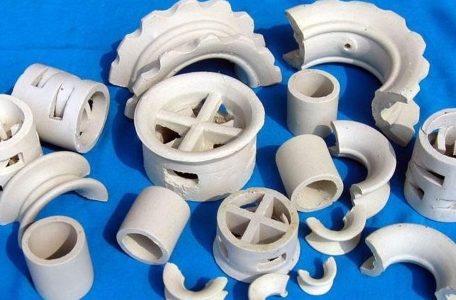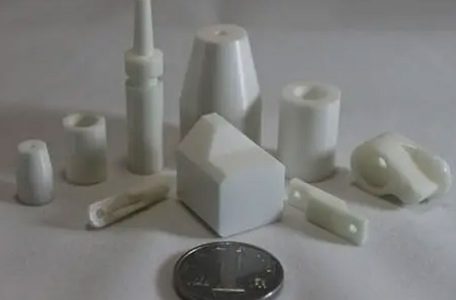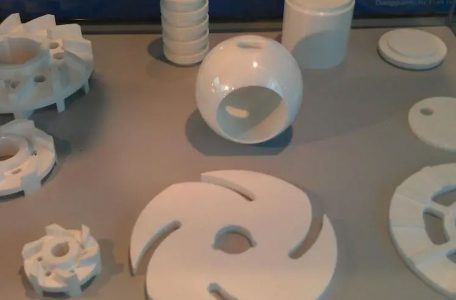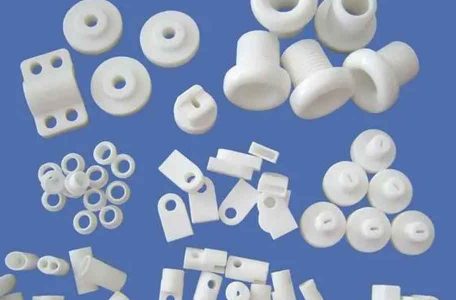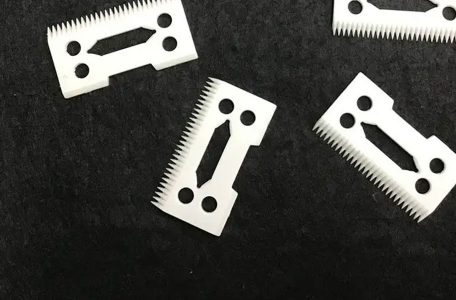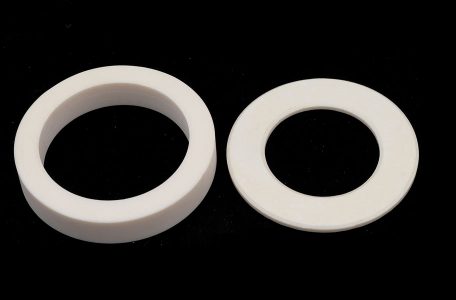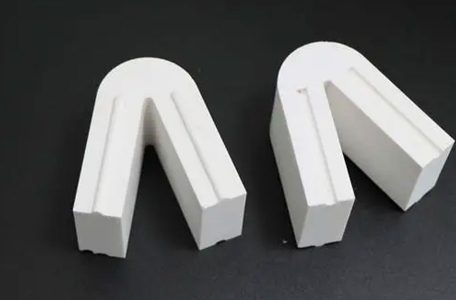95 alumina ceramic tube has excellent properties such as high temperature resistance, wear resistance and insulation, and is widely used in various industrial equipment and scientific research. Pintejin zirconia ceramic machining manufacturer will tell you the production and use of 95 alumina ceramic tube. 95 alumina ceramic tube powder is a high-performance ceramic tube manufactured by spray granulation, isostatic pressing and high temperature sintering process, 95 alumina ceramic tube. 95 alumina ceramic tube 95 alumina ceramic tube has the characteristics of high hardness, good wear resistance and corrosion resistance. It can be widely used as grinding media in ball mills, vibration mills, planetary mills and stirring mills. The 95 alumina Read more
Alumina ceramics is a kind of high temperature structural ceramics with the most extensive uses, the most abundant raw materials and the lowest price. Alumina raw materials are abundant in source and low in price. According to the composition, it can be divided into two categories: alumina porcelain and high-alumina porcelain. Generally, the alumina content in alumina ceramics is more than 99%, and the sintering temperature is high. When the raw material particle size is coarse, the sintering temperature can reach 1700 ° C. In order to improve the sintering performance and reduce the sintering temperature, a small amount of MgO, Cr2 03, TiO2, etc. are often added as The Read more
Electrical ceramics have good corrosion resistance and high temperature resistance characteristics. They have a wide range of applications and really play an important role in actual use. So what are the classifications of electrical ceramics? Next, Pintejin ceramics will introduce to you. 1. Insulation device porcelain Device porcelain for short, has excellent electrical insulation properties, and is used as electronic ceramics for structural parts, substrates and casings in electronic equipment and devices. Porcelain parts of insulating devices include various insulators, coil bobbins, electronic tube sockets, band switches, capacitor strut brackets, integrated circuit substrates and packaging shells. 2. Capacitor porcelain Mainly used in the manufacture of ceramic capacitors for bypass, DC Read more
Zirconia ceramic grinding method Zirconia ceramics have high structural strength at high temperature and have a negative temperature coefficient of resistance. Therefore, under certain circumstances, the material of the product needs to be ground to a certain extent. The specific methods are as follows: (1) Mechanical grinding of zirconia ceramics: When constructing zirconia ceramics on a large area, in order to improve work efficiency, mechanical grinding methods, such as electric grinders (disc type, vibration type), can be used. (2) Dry grinding of zirconia ceramics: use sandpaper for grinding. It is suitable for grinding hard and brittle paints. The disadvantage of grinding zirconia ceramic materials is that a lot of dust Read more
Injection molding is to mix ceramic powder and organic binder, and inject ceramic powder into the metal mold cavity through an injection molding machine in the temperature range of 130-300 °C. blank. The advantages of the ceramic injection molding process are mainly reflected in the following aspects: It has superior molding ability and can produce precision parts with complex shapes. Since the raw material is finer powder particles, the sintering density is high, the relative theoretical density of solid phase sintering can reach more than 95%, and the liquid phase sintering can reach more than 99%, and its microstructure is fine and uniform, with Excellent mechanical properties. Injection molding is Read more
Pintejin Ceramic Factory has recently purchased a 1050 centerless grinding machine, which is an indispensable ceramic machining machine in the machining of zirconia ceramics. Its main function is to finely grind and polish the outer diameter, which greatly improves the production efficiency of our factory. 1. The centerless grinder MT1050/M1050A adopts the grinding wheel frame to be fixed and the guide wheel frame to move. 2. The main shaft of the grinding wheel adopts multi-piece long bearing bush dynamic pressure oil film bearings, and the main shaft of the guide rail adopts an integral 1:30 cone sliding bearing; the grinding wheel and the guide wheel are of cantilever type structure. Read more
Basic performance of zirconia ceramics , is gradually being adopted by decorative ceramics, such as colored zirconia ceramics, ceramic jewelry, etc. Zirconia ceramics is an inorganic non-metallic material with high temperature resistance, corrosion resistance, wear resistance and excellent electrical conductivity. It was used in the field of refractory materials in the early 1920s until the mid-1970s. Japan’s advanced countries have invested in the research and development of zirconia ceramic production technology and the production of zirconia ceramic series products, and further expanded the application field of zirconia ceramics to structural materials and functional materials. At the same time, zirconia ceramics are also encouraged by the national industrial policy. One of Read more
Due to its unique semiconductor characteristics, semiconductor ceramics are suitable for equipment with special requirements for materials, etc. The following Pintejin ceramic zirconia machining factory will introduce you to semiconductor ceramics. Semiconductor ceramics refer to ceramic parts with semiconductor properties and electrical conductivity of about 10-6 to 105/m. The conductivity of semiconductor ceramics changes significantly due to changes in external conditions (temperature, light, electric field, atmosphere and temperature, etc.), so the physical quantity changes in the external environment can be converted into electrical signals to make sensitive components for various purposes. Thermal ceramics: also known as thermistor ceramics, refers to ceramics whose conductivity changes significantly with temperature. Thermal semiconductor ceramic Read more
The characteristic of rotary ultrasonic machining is that its ultrasonic head rotates with the spindle during operation. A large number of test results show that in the process of machining, the removal effect of simple tool rotation or ultrasonic vibration is relatively poor, but after the combination of the two, the situation has been greatly improved. Compared with traditional ultrasonic machining, rotary ultrasonic machining has the following advantages: The machining speed is fast. Ultrasonic rotary machining retains the advantages of traditional ultrasonics, that is, both conductive and non-conductive materials can be processed, and the machining speed can reach more than 100mm/min. The machining speed of ultrasonic rotary machining is 10 Read more
Many people will ask is ceramics a conductor? Is ceramic insulating? Let Pintejin Zirconia Ceramic Factory answer everyone: Ceramics are not conductors. The insulation properties of ceramics are introduced below. Insulating ceramics, also known as device ceramics, are ceramic materials used in electronic equipment to install, fix, support, protect, insulate, isolate and connect various radio components and devices. Insulated zirconia ceramic tube To be an excellent insulating ceramic, it must have the following properties: 1. High volume resistivity ≥1012Ω·m; 2. Small relative permittivity εr≤30; 3. Loss factor tgδ ≤0.001; 4. High dielectric strength ≥500kV/cm, good thermal conductivity: thermal conductivity is 24~28W/m·K; corrosion resistance, no deformation, can be used in the Read more

Ceramic Machining Industry
- Ceramic Flange
- Ceramic Nozzle
- Ceramic Pin
- Ceramic Plunger
- Ceramic Rod
- Ceramic Shaft/Ceramic Sleeve
- Ceramic Structure Parts
- Ceramic Valve
- Ceramics Cutter
- Electronic Ceramics
- Medical Food Ceramics
- Petrochemical Ceramics
- Photovoltaic Ceramic
- Semiconductor Ceramics
- Microporous Ceramic Suction Cup
- Lithium Battery Ceramic Pump
